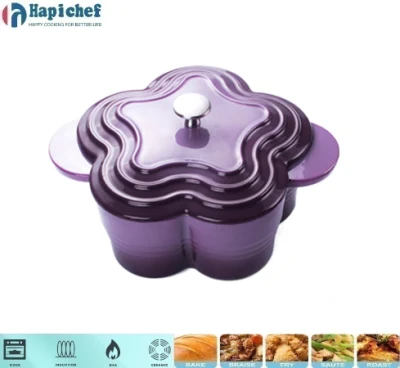Exploring the Art of Crafting Durable Cast Iron Cookware in Modern Manufacturing Facilities
The Art of Crafting Cast Iron Cookware A Journey Inside a Cast Iron Cookware Factory
Cast iron cookware has long been celebrated for its durability, versatility, and ability to retain heat, making it a staple in kitchens around the world. The process of manufacturing this beloved kitchen essential is a fascinating blend of traditional craftsmanship and modern technology. In this article, we take a closer look at the journey of cast iron cookware from raw materials to the finished product by exploring the inner workings of a cast iron cookware factory.
Sourcing Raw Materials
The journey begins with the sourcing of raw materials. The primary ingredient is iron, predominantly sourced from iron ore. In a typical cast iron cookware factory, the iron is melted in a furnace, often fueled by natural gas or other efficient energy sources. The factory may also incorporate recycled iron, which not only adds to sustainability but also reduces production costs.
Once the iron is melted, it is alloyed with carbon and other metals to enhance its properties. The precise composition of the alloy can greatly influence the performance of the cookware, affecting its heat retention, non-stick characteristics, and resistance to rust.
Molding and Casting
After preparing the molten iron, the next step involves creating molds. Molding is a critical stage and is often done using sand molds that are formed around patterns of the desired cookware shape, such as skillets, Dutch ovens, or griddles. This process allows for intricate designs and uniform thickness, which are essential for ensuring even heat distribution during cooking.
The molten iron is then poured into these molds
. Once cooled, the cast pieces are removed from the molds, revealing rough-around-the-edges cookware that requires further finishing.Finishing and Quality Control
Following the casting process, the cast iron cookware undergoes a series of finishing steps. This may involve grinding, sanding, and polishing the surfaces to achieve a smooth finish. At this stage, attention to detail is paramount, as any imperfections can affect the cookware's performance and aesthetic appeal.
cast iron cookware factory

Quality control is an ongoing process throughout manufacturing. Each piece is inspected for surface flaws, weight consistency, and proper dimensioning. Some factories utilize advanced testing methods, including thermal cycling tests to evaluate the heat retention and cooking performance of the cookware.
Seasoning
One of the unique features of cast iron cookware is its need for seasoning. After finishing, the cookware is subjected to a seasoning process, which involves applying a layer of oil and heating it to create a protective non-stick surface. This step is vital, as a well-seasoned cast iron pan can enhance flavor and improve cooking performance over time.
Many factories adopt automated systems for the seasoning process, allowing for consistent results. However, some still stick to traditional methods, with artisans applying the seasoning by hand, fostering a connection between the craftspeople and the cookware.
Packaging and Distribution
Once all processes are completed, the finished cast iron cookware is meticulously packaged to ensure safe transit. Factories often prioritize eco-friendly packaging materials to align with growing sustainability practices.
Finally, the products are distributed to retailers, where they find their way into kitchens across the globe. Each piece tells a story, representing the fusion of old-world craftsmanship and modern manufacturing techniques.
Conclusion
The world of cast iron cookware manufacturing is one where tradition meets innovation. From the careful sourcing of raw materials to the final inspection and seasoning, every step is crafted with precision and passion. Visiting a cast iron cookware factory offers a unique glimpse into the dedication that goes into making these kitchen staples, ensuring that they not only perform beautifully but also last for generations to come.
-
Transform Your Kitchen with Big Iron Cast Wok CraftsmanshipNewsAug.05,2025
-
Traditional Cooking with Cast Iron Woks and Pots with HandlesNewsAug.05,2025
-
Outdoor and Indoor Cooking with Cast Iron Wok MasteryNewsAug.05,2025
-
Maximize Outdoor Cooking Versatility with Premium Cast Iron WoksNewsAug.05,2025
-
Master Traditional Cooking with a Chinese Cast Iron WokNewsAug.05,2025
-
Culinary Power with High-Performance Cast Iron WoksNewsAug.05,2025
-
Why Every Kitchen Needs a Casserole Cast Iron DishNewsJun.24,2025
